#tourist places in north east
Text

"Discover the Beauty of India's Northeast: The Seven Sisters of India"
Nestled in the far-eastern corner of India, the Northeast region is a mesmerizing and culturally diverse paradise waiting to be discovered. Comprising eight states—Arunachal Pradesh, Assam, Manipur, Meghalaya, Mizoram, Nagaland, Sikkim, and Tripura—Northeast India offers a unique blend of breathtaking landscapes, rich biodiversity, vibrant festivals, and warm hospitality. In this blog post, we will embark on a journey to explore the uncharted beauty and charm of Northeast India.
1. Assam:
Known as the gateway to Northeast India, Assam is famous for its tea gardens, wildlife sanctuaries, and the mighty Brahmaputra River. Visit the Kaziranga National Park, home to the endangered one-horned rhinoceros, and take a boat ride on the Brahmaputra to witness its grandeur. Don't miss the vibrant Bihu festivals and savor the world-renowned Assam tea.
2. Meghalaya:
Meghalaya, meaning "the abode of clouds," lives up to its name with its lush green landscapes and abundant rainfall. Explore the living root bridges in Cherrapunji and Mawlynnong, the cleanest village in Asia. Discover the enchanting Mawsmai Caves and enjoy the stunning views of waterfalls like Nohkalikai and Seven Sisters. Shillong, the capital city, offers a blend of colonial charm and a thriving music scene.
3. Arunachal Pradesh:
Arunachal Pradesh, the "Land of the Rising Sun," boasts of breathtaking Himalayan landscapes, ancient monasteries, and rich tribal culture. Visit Tawang, home to the famous Tawang Monastery and the beautiful Peng Teng Tso Lake. Explore the Ziro Valley, known for its scenic beauty and the Apatani tribe's unique culture. Don't miss the Namdapha National Park, a biodiversity hotspot.
4. Nagaland:
Nagaland, known for its vibrant tribes and unique festivals, offers a glimpse into the rich Naga heritage. Witness the Hornbill Festival, a grand celebration of Naga culture, in Kohima. Explore the picturesque village of Khonoma, known for its conservation efforts and indigenous traditions. Trek to Dzükou Valley for stunning views and immerse yourself in the warmth of Naga hospitality.
5. Manipur:
Immerse yourself in the natural beauty and rich cultural heritage of Manipur. Visit Loktak Lake, the largest freshwater lake in Northeast India, and explore the unique floating phumdis (islands). Witness the awe-inspiring Ras Lila dance performances at the Govindaji Temple and discover the ancient Kangla Fort in Imphal. Don't miss the Sangai Festival, showcasing Manipuri art, dance, and music.
6. Mizoram:
Mizoram, known as the "Land of the Highlanders," captivates visitors with its rolling hills, cascading waterfalls, and vibrant tribal culture. Explore Aizawl, the capital city, and visit the revered Mizoram State Museum. Trek to the breathtaking Phawngpui Blue Mountain, the highest peak in Mizoram, and witness the grandeur of the Palak Wildlife Sanctuary.
7. Tripura:
Discover the hidden treasures of Tripura, the land of legendary palaces and captivating landscapes. Visit the magnificent Ujjayanta Palace in Agartala and the ancient Neermahal Palace, located amidst the tranquil Rudrasagar Lake. Explore the rich archaeological sites of Unakoti and witness the vibrant Tripuri dance forms during the Kharchi Festival.
8. Sikkim:
Though a part of Northeast India, Sikkim deserves special mention for its pristine beauty and spiritual significance. Explore the capital city of Gangtok, visit the Rumtek Monastery, and enjoy the breathtaking views of the Himalayas. Discover the magical Yumthang Valley, Tsomgo Lake, and the ancient Pemayangtse Monastery.
9. Tripura Sundari Temple, Tripura:
Located in the ancient city of Udaipur in Tripura, the Tripura Sundari Temple is a significant pilgrimage site and architectural marvel. Dedicated to the goddess Tripura Sundari (a form of Goddess Durga), this temple showcases exquisite craftsmanship and intricate carvings. The temple's unique architectural style and the serene surroundings add to its spiritual aura. Visitors can participate in religious rituals, witness colorful festivals, and soak in the divine atmosphere of this revered temple.
10. Dzukou Valley, Nagaland-Manipur Border:
Nestled on the border of Nagaland and Manipur, Dzukou Valley is a hidden gem known for its untouched natural beauty. Often referred to as the "Valley of Flowers of the Northeast," Dzukou Valley is a paradise for trekkers and nature enthusiasts. The valley comes alive with a vibrant carpet of wildflowers, including lilies, rhododendrons, and orchids, during the spring season. The picturesque trek to Dzukou Valley offers breathtaking views of rolling hills, cascading streams, and lush green landscapes. Camping in the valley and witnessing the awe-inspiring sunrise and sunset vistas is a truly enchanting experience.
Conclusion:
Northeast India, with its untouched beauty, rich cultural heritage, and warm hospitality, offers a unique travel experience. From the misty hills of Meghalaya to the mystical land of Arunachal Pradesh, each state in the region has its own distinct charm. Embark on a journey to Northeast India, and you'll find yourself immersed in a world of breathtaking landscapes, diverse cultures, and unforgettable memories. Prepare to be enchanted by the unexplored paradise of Northeast India.
#north east tour package#north east government tourism packages#north east trip plan#north east family tour packages#north east tour package from mumbai#meghalaya tour package#meghalaya trip#shillong tour#meghalaya tour#meghalaya trip packages#shilling 2 days packages#shillong tour itenerary#north east places to visit#places to visit in north east#north east tourist places#best places to visit in north east#tourist places in north east#best places in north east#north east packages from delhi#north east package from bangalore#north east tourism package#north east india tour package#best tour operator from north east#north east india tourism best time to visit#seven sisters tour packages#top 5 places to visit in north east
1 note
·
View note
Text
The Top 15 Things to See in Thailand: Must-Visit Destinations
Plan your trip to Thailand with my list of must-see attractions. From vibrant markets to stunning national parks to ancient temples, experience the best of this enchanting destination.
With a rich culture and history, spectacular beaches, and some of the best food in the world, Thailand is one of Southeast Asia’s top travel destinations. From the incredible temples of Chiang Mai and Chiang Rai to the beautiful coastline of Phuket, Thailand really does have it all. In fact, there are so many things to see in Thailand that it can sometimes be a little daunting when planning a…
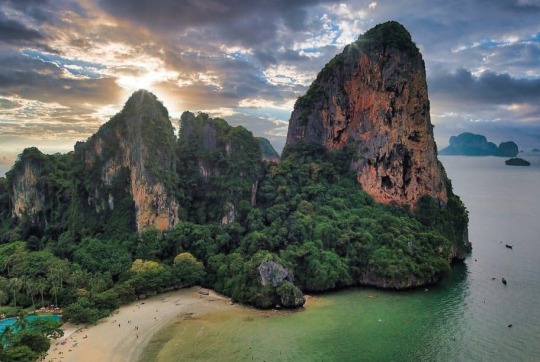
View On WordPress
#best places to visit in thailand#cool things to see in thailand#crazy things to see in thailand#must see things in thailand#places to go see in thailand#places to see in thailand#places to see in thailand for kids#places to visit in central thailand#places to visit in eastern thailand#places to visit in north east thailand#places to visit in thailand#places to visit in thailand chiang mai#things to do in thailand as a tourist#things to do in thailand backpacking#things to do in thailand for adults#things to do in thailand for couples#things to do in thailand with family#things to do in thailand with kids#things to see in thailand#things to see in thailand top 10#things you have to see in thailand#what to do in thailand for a month#what to do in thailand for a week#what to see in thailand#what to see in thailand best of the best#what to see in thailand in 10 days#what to see in thailand in 14 days#what to see in thailand in 7 days
0 notes
Text
Mesmerised by Nature’s Green Grandeur in Majestic Meghalaya
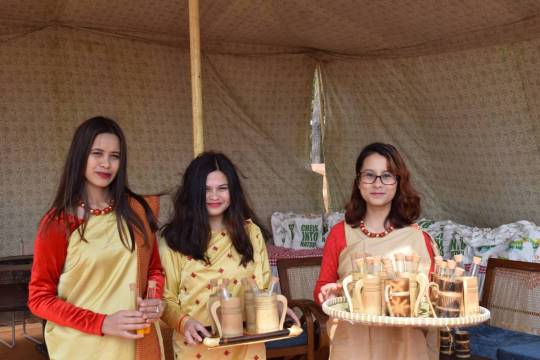
View On WordPress
#about meghalaya#beautiful destinations#culture of Meghalaya#meghalaya root bridge#meghalaya tourism hotels#meghalaya tourist places#north east India#offbeat getaways#Places to visit in Meghalaya#Popular destinations in Meghalaya#things to do in Meghalaya#Travel Feature#What is Meghalaya famous for?#what to see in India
0 notes
Text
Must Visit Tourist Places in North East India

Read More - Click Here
#travel#places#tourist spots#tourist#india tourism#adventure#adventure activities#places to travel#places to visit#north east
0 notes
Text
Best Time To Visit In Darjeeling
Are you preparing for your honeymoon or taking a solo journey to one of Darjeeling's idyllic locations? We are here to shed light on the many seasons that this hillside beauty experiences, as well as the ideal times and most well-liked destinations in Darjeeling.
One of India's most well-known hill towns, Darjeeling is renowned for its rich ethnic diversity and breathtaking natural beauty. The site is even more beautiful and mesmerising because of the calm and cold weather. Due to the consistently temperate and pleasant weather, Darjeeling is accessible all year round.
However, because landslides frequently occur during the monsoon season, you might want to reevaluate your vacation plans. We present to you a seasonal breakdown that will assist you in organising that eagerly anticipated romantic rendezvous with your beloved in Darjeeling!

This Is The Best Time To Visit Darjeeling
Between March to May – During the Summer season
Between October to November – Sometimes during the winter season
Both of these occasions include agreeably chilly temperatures and typically clear skies that provide breathtaking vistas of the Kanchenjunga snow peaks. So begin making plans for your vacation to Darjeeling, and we wish you a wonderful experience.
Why Should visit Darjeeling?
Here's a little overview of Darjeeling before we take you through the seasons of this magnificent wonder. Every nature lover's dream destination, Darjeeling is a lovely hill station from colonial-era India. Travellers frequently inquire about the ideal season to go. The finest months for visiting Darjeeling are March, April, and May (spring) and September, October, and November (autumn), according to everybody who has been here.
Darjeeling sometimes referred to as the "Queen of All Hill Stations," is a charming hill station in northern West Bengal that is famous for its tea plantations, fir, pine, and fern-covered landscapes, and stunning vistas of the snow-capped Kanchenjunga. It is a stunning location with several lush green tea farms that spans an area of 1,200 square miles and is flanked by the Himalayan hills.
Did you know that Darjeeling's name was derived from the Tibetan words "Dorji," which means "Thunderbolt," and "Ling," which means "Place"? Darjeeling, thus, literally translates as "The location of the thunderbolt."
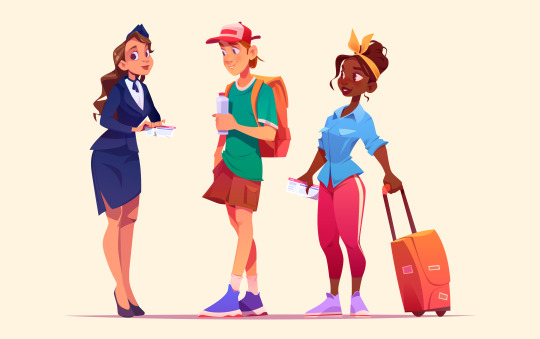
A lot to see in Darjeeling
Visits to Darjeeling are usually enjoyable and energising. These lively roads, stores, eateries, and hotels guarantee a relaxing and enjoyable visit. Take a deep breath as you stroll around Darjeeling's streets to fully appreciate the tranquilly, warmth, and joy that this area has to offer. Don't forget to see Senchal Lake, Ghoom Monastery, and Observatory Hill, some of Darjeeling's most well-known tourist sites, as well as the famous toy train trip, which will live long in your mind. To take advantage of Darjeeling's distinctive tourist attractions to the fullest, try to reserve your stay at a tea plantation or resort. Darjeeling offers a variety of lodging options to suit all preferences and budgets.
Darjeeling in Summer: From April to June
The summer months are pleasant in terms of temperature. The ideal time to visit Darjeeling is when the temperature is typically about 25°C. The summer months of April to June are ideal for travelling to Darjeeling since the weather is at its finest and there are so many outdoor things to experience.
Additionally, this is the time of year when there are the most visitors. Don't miss to see the breathtaking dawn on Tiger Hill and take in the splendour of India's tallest mountain peak, Kanchenjunga. In Darjeeling, the Barbotey Rock Garden is a fantastic area to go to in the summer. By the end of March, the bitter cold has gradually subsided and the weather has turned calm and lovely.
Summer is among the greatest times to travel to Darjeeling. Throughout the year, vibrant rhododendrons and magnolias blossom in profusion. Summertime strolling around Darjeeling's streets is a memorable experience in and of itself. You just need a few shawls and light woollens throughout this season. Since it won't be frigid at night, you may simply wander about the area discovering it.
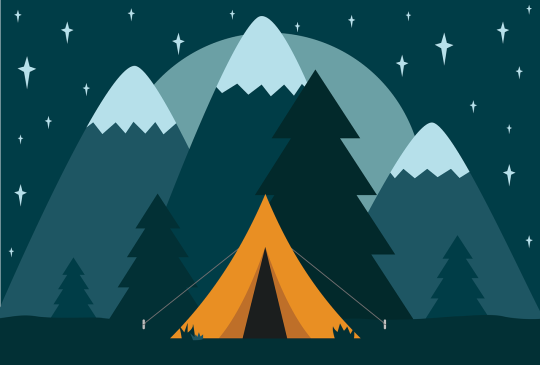
Darjeeling in Monsoon: From July to September
Darjeeling often has strong rain from July on. The monsoons are wonderful, but travelling to Darjeeling during these months may be difficult due to barriers everywhere and the regular incidence of landslides. But if you've already decided to travel to Darjeeling in the monsoon season, you'll fall in love with the lush, green landscape that is soaked in rain and makes for some incredible photo opportunities.
On the other side, there is less rain at the end of September. So you should absolutely think about scheduling your vacation to Darjeeling now. Since the monsoon season is regarded as the off-season, Darjeeling hotels and resorts frequently offer attractive discounts. This implies that you might reserve a posh hotel at an unbelievable low cost and take pleasure in your enjoyable monsoon stay.
The monsoon season often ends in October, and the weather returns to being nice and calm. The usual range for the temperature is between 7 and 5 degrees Celsius. However, there are occasions when it may dip as low as -2 degrees Celsius, so be sure to take thick clothing. During this time of the year, it is also very common to find thangkas, tiny monasteries, Tibetan and Himalayan curios, and clothing made from yak wool.
Thukpa, a noodle-based dish influenced by Tibetan cuisine, is one of the must-have treats during the Darjeeling monsoon season. Additionally, you may go to lovely cafés and read a book or talk to a friend while savouring piping-hot coffees, teas, or hot chocolate.
Darjeeling in Winter: From October to March
Darjeeling's winters are extremely cold, with daily highs and lows between 2 and 7 degrees Celsius. Darjeeling's winter season, which often starts in October and lasts until March, might be the perfect time to come and take in the city's snowy and pure splendour. Since fewer visitors come during this time of year, you may enjoy the serenity while taking in the breathtaking scenery of the snow-capped mountains. Imagine spending quality time in Darjeeling during the winter with your loved one. How lovely is that?
If you're intending to visit Darjeeling any time between December and February, don't forget to bring your woollen clothing. The extensive selection of regional ethnic cuisines in Darjeeling is yet another fantastic draw. Because there are so many different cultures present, you may sample real local cuisine from a variety of ethnic groups, including Tibetan, Nepali, Bengali, and others. The mouthwateringly wonderful and lip-smackingly superb local fare includes the renowned fragrant Darjeeling tea, Churpee (made with yak milk), and Tongba (a local beer).
Foods like Thukpa, momos, alu dum, the traditional Nepali thali, Dalle, Kakra ko achar, kinema, naga cuisine, shaphalay, sael roti, and gundruk are also famous in Darjeeling. You may now easily visualise yourself enjoying a cup of steaming momos and Darjeeling tea.

Brilliant Landscape of Darjeeling
Now that you are aware of the seasonal changes in Darjeeling, it is time to learn more about the layout of this magnificent hill station town. Three main levels on the hills may be used to represent the entire scenery of Darjeeling. Additionally, steep, narrow roadways necessarily link one level to the next.
The Town Center, commonly known as Chowrasta Mall, is situated at the top level and is one of the most well-liked tourist destinations in Darjeeling. The majority of Darjeeling's well-known hotels, eateries, and retail establishments are situated here. The whole Nehru Road, which ascends to the Mall, or Mall Road itself, makes up the upper level. There are several hotels along Zakir Hussain Road.
The region along Laden La Road, which descends and links the top level with locations like the station area, Chowk Bazaar, etc. at the bottom level, is effectively the second level. Along with several hotels and stores decorated in Indian style, the area offers stunning mountain scenery.
The renowned Chowk Bazaar is situated on the ground floor. Most of the time, the region is still congested with locals, who are primarily Nepalese, Tibetans, Lepchas, and Bhutias. Here, you may find a variety of affordable places to stay in Darjeeling. None of them, however, can genuinely provide spectacular views of the mountaintop.
Consider weekend escapes like Pelling, Lava, Kalimpong, and Siliguri once you've finished touring Darjeeling. These little mountain communities provide plenty of scenic views, inexpensive shopping, and intriguing local cultures.
There you have it, folks! Here's what we have to say about the Queen of hill stations, Darjeeling, in the hopes that you now have a good understanding of all it has to offer.

How To Reach Darjeeling
By Air
The distance from Darjeeling to the closest airport, the Bagdogra airport, through NH 31 is 87 km, whereas the distance via NH 55 is 69 km. This little airport has regular flights to other significant American cities.
By Rail
Only 80 kilometres separate New Jalpaiguri from Darjeeling, where trains from all across the nation halt. From New Jalpaiguri, a toy railway also runs to Darjeeling.
By Road
Siliguri and Darjeeling are connected by road. Both the route through NH 31 and the trip via NH 55 are 64 kilometres long. This drive is really lovely.
#Best time to visit Darjeeling#darjeeling tourism#darjeeling tourist places#best north-east Indai tour#mountaineering#trekking#national park#tiger hill#queen of hill station
0 notes
Photo

Two in One
What do you think about my pic?
#51 Astor Place#770 Broadway#Lower Manhattan#New York City#vacation#travel#summer 2019#original photography#architecture#cityscape#USA#tourist attraction#landmark#photo of the day#reflection#East Village#East Side#Fumihiko Maki#NoHo#North of Houston Street#Daniel Hudson Burnham#What do you think about my pic?
1 note
·
View note
Text
Things that surprised me as a European tourist in the United States
This is based on my experience as a Spaniard traveling to the United States (specifically New York City and Washington, D. C.).
Like many people around the world, I have grown up in contact with U.S. culture through literature, film, and music, so I didn't experience much cultural shock, but some things still surprised me.
All vehicles (cars, trucks, school buses...) are huge! Most cars are pickup trucks or SUVs. The most common brands came from the United States, but I also saw many Japanese cars, especially Nissan and Toyota (mostly Prius, USAmericans seem to love this model 😂).
Customer service is great, not only in restaurants or places where one is expected to leave a tip but also in museums and subway stations.
I heard many different languages spoken by locals, including Mandarin, Russian, and Spanish, as well as European languages spoken by tourists, such as French, German, and Portuguese. (I think that this is mostly the case in big cities, and especially NYC.) In general, the United States is more ethnically diverse than that in Europe, or at least Spain.
People wear face masks more often, although I guess that this is transient due to flu season. Still, way fewer people wear them in Spain.
Taxes are not included in the price. (I was aware of this but used to forget about it at first.)
Toilets are not as deep as in Europe (the water is really close to your butt 😖), and many flush automatically. Public restrooms always have seat covers but normally do not have a toilet lid.
The doors are really heavy! No wonder many people (mostly men) held them open for me. I once had to throw myself against the door to open it. What is the deal with doors in the U.S.? (Is it a NYC thing only?)
People were quite loud (and this is coming from someone who grew up in a country that is renowned for how loud we talk) and played music/videos without headphones in the subway 😑
Cops are surprisingly chill despite the reputation that they have. A guy was insulting a couple of them from across the subway platform, and they just smiled and waved at him. In Spain, it is a crime to insult a police officer, so I was surprised that they were so chill about the whole situation.
On that note, there were a lot of cops around the city at all times (even at 5 a.m.). I counted nine of them in Penn Station!
Drivers honk all the time because of every minor inconvenience. On Thanksgiving Day, there were a lot of traffic jams, and people were honking as if that would magically clear the streets... And, of course, if one person honked, the rest honked as well, so walking on the street on the main avenues was really deafening 😐
Traffic lights are quite far away from where cars have to stop.
Fire truck sirens are really loud and sound like emergency alarm systems. (It reminded me of those TikTok videos ranking them.)
People say "Excuse me" in the subway when going in or out, which was a nice change from the shoving and pushing I'm used to in Madrid.
I saw a lot of people carrying around huge reusable water bottles. (Here's an explanation for why USAmericans drink so much.)

People called me "Ma'am" instead of "Miss". I know it's the polite way to address people, but it was very weird 😂
New Yorkers (maybe USAmericans in general) love to use cardinal directions (north, south, east, west) when giving directions. Someone once told me, "Go west on Broadway" and I was like "I have trouble orienting myself when I use Google Maps, do you think I know which direction I'm going in at all times??".
There are lots of caution signs about worker safety on construction sites, both in English and Spanish, which leads me to think that there are many work accidents 🤔
As a solo female traveler, I was a bit concerned about my security in a city that I have heard is dangerous and in a country where mass shootings are a relatively normal occurrence (unfortunately), but I felt mostly safe. I was surprised to see many posters that read, "If you see something, say something".
Related to the above, I was shocked to see "This is a gun free zone" posters in public places and "No guns allowed" posters on supermarket doors.

I was really surprised to see ads with phone numbers with words in them, like the one below. After doing some research, I discovered they are called vanity numbers and are easier for people to remember. (If, like me, you're wondering how to dial these numbers, apparently you just press the number that corresponds to the letter on the keypad.)

I smelled marijuana everywhere! Although illegal in Spain, you can also smell it sometimes, but it seemed ubiquitous in NYC. (I personally hate the smell, which is why I noticed.)
56 notes
·
View notes
Text
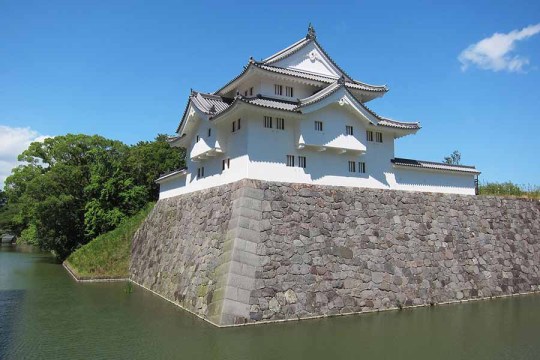
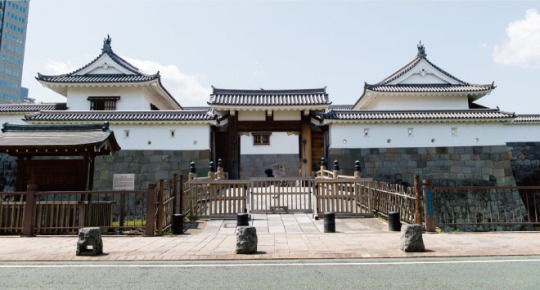
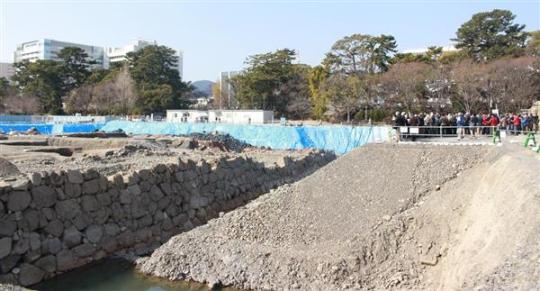
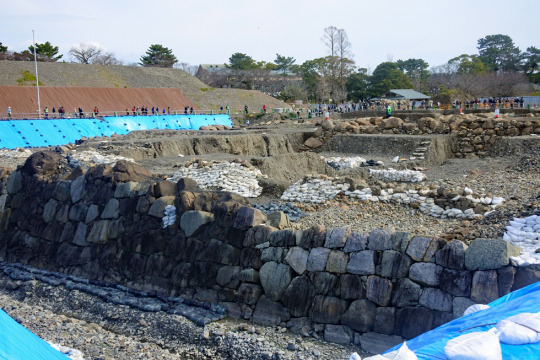
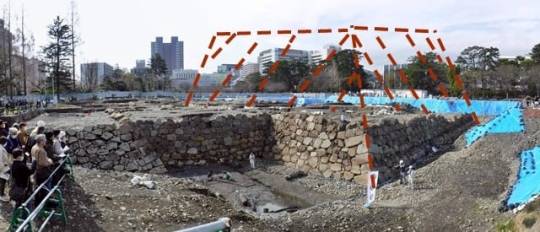
Sean bienvenidos japonistasarqueológicos, a una nueva entrega de arqueología nipona en esta ocasión os hablaré del castillo de Sunpu que se encuentra en la ciudad de Shizuoka, en la Prefectura de Shizuoka.
-
El castillo de Sunpu, fue en el lugar en donde vivó, Ieyasu Tokugawa en los siglos XVI-XVII, donde pasó sus últimos años de vida, las ruinas de las torres del castillo que se construyeron con diferentes métodos de construcción durante el período Sengoku y el período Edo.
-
Sunpu Castle Park es uno de los lugares turísticos representativos de la ciudad de Shizuoka es un parque que utiliza las ruinas del castillo, macizo de flores Aoi lleva el logo de la familia de Tokugawa como proyecto conmemorativo del 400 aniversario de Ieyasu Tokugawa. El área está bajo excavación, se encuentra en la zona noroeste y se está realizando actualmente la excavación de la torre del castillo.
-
Hay una parte del castillo que está muy reconstruida y que se puede visitar con un módico precio, dado que el segundo piso y los superiores no se pueden abrir al público debido a la ley de construcción, el piso se quita para que la estructura se pueda ver desde abajo.
-
La Puerta Este/Tatsumi Yagura, está rodeada por un foso y está cerca de la estación Shin-Shizuoka. La torreta Tatsumi Higashigomon y Tatsumi Yagura están conectadas,el Tatsumi Yagura fue restaurado en 1989 y la puerta este se restauró en 1996. La entrada al jardín Momijiyama está cerca de la puerta norte del parque del castillo de Sumpu. Hay un gran estanque en el centro, y está dividido en 9 áreas que se asemejan al paisaje de Shizuoka con flores de temporada. Hay una estatua de Yaji-san y Kita-san fue construida para conmemorar el 200 aniversario.
-
En 1585, Tokugawa Ieyasu comenzó la construcción del castillo y en 1588 se completó la torre del castillo Sunpu.Incluso después de que Ieyasu empezará el shogunato de Edo en 1603 y se mudó a Edo, la familia Tokugawa continuó preparándolo.Se dice que es el lugar donde Ieyasu regresó al castillo de Sumpu en 1607, se retiró y murió en 1616 a la edad de 75 años.
-
Espero que os haya gustado y nos vemos en próximas publicaciones, pasen una buena semana.
Welcome, Japanese archaeologists, to a new instalment of Japanese archaeology. This time I will be talking about Sunpu Castle, located in the city of Shizuoka, Shizuoka Prefecture.
-
Sunpu Castle was the place where Ieyasu Tokugawa lived in the 16th-17th centuries, where he spent the last years of his life. The ruins of the castle towers were built with different construction methods during the Sengoku and Edo periods.
-
Sunpu Castle Park is one of the representative tourist sites of Shizuoka City is a park that uses the ruins of the castle, Aoi flowerbed bears the logo of the Tokugawa family as a project commemorating the 400th anniversary of Ieyasu Tokugawa. The area is under excavation, it is located in the northwest area and the excavation of the castle tower is currently underway.
-
There is a part of the castle that is heavily reconstructed and can be visited for a small fee, as the first floor and above cannot be opened to the public due to construction law, the floor is removed so that the structure can be seen from below.
-
The East Gate/Tatsumi Yagura, is surrounded by a moat and is close to Shin-Shizuoka Station. The Tatsumi Higashigomon turret and Tatsumi Yagura are connected, the Tatsumi Yagura was restored in 1989 and the east gate was restored in 1996. The entrance to Momijiyama Garden is near the north gate of Sumpu Castle Park. There is a large pond in the centre, and it is divided into 9 areas that resemble the Shizuoka landscape with seasonal flowers. There is a statue of Yaji-san and Kita-san was built to commemorate the 200th anniversary.
-
In 1585, Tokugawa Ieyasu started the construction of the castle and in 1588 the Sunpu castle tower was completed. Even after Ieyasu started the Edo shogunate in 1603 and moved to Edo, the Tokugawa family continued to prepare it. It is said to be the place where Ieyasu returned to Sumpu castle in 1607, retired and died in 1616 at the age of 75.
-
I hope you liked it and see you in future posts, have a nice week.
日本の考古学者の皆さん、新しい日本考古学へようこそ。今回は、静岡県静岡市にある駿府城についてお話します。 - 駿府城は、16 世紀から 17 世紀にかけて徳川家康が晩年を過ごした場所です。天守閣跡は、戦国時代から江戸時代にかけてさまざまな工法で築かれました。
-
静岡市を代表する観光地の一つである駿府城公園は、徳川家康公400年記念事業として城跡を利用した公園で、葵花壇には徳川家のマークが刻まれています。発掘調査中のエリアで、北西部に位置し、現在天守閣の発掘調査が行われています。
-
城の一部は大規模に復元されており、1階以上は建築法の関係で一般公開できないため、床を撤去して下から構造を見学できるようになっており、低料金で見学できる。 。
-
新静岡駅からもほど近い、お堀に囲まれた東門・巽櫓。巽東御門櫓と巽櫓はつながっており、巽櫓は1989年、東門は1996年に復元されました。紅葉山庭園の入り口は駿府城公園の北門近くにあります。中央に大きな池があり、季節の花々が彩る静岡の風景をイメージした9つのエリアに分かれています。弥次さんと喜多さんの像があり、200年を記念して建てられました。
-
1585年に徳川家康が築城を開始し、1588年に駿府城天守閣が完成しました。 1603年に家康が江戸幕府を開き、江戸に移った後も、徳川家では仕込み続けられました。 1607年に家康が駿府城に戻り、隠居し、1616年に75歳で亡くなった場所といわれています。
-
気に入っていただければ幸いです。今後の投稿でお会いしましょう。良い一週間をお過ごしください。
#日本#歴史#ユネスコ#城#考古学#遺跡#徳川家康#戦国時代#駿府城#静岡市#葵の花#辰野櫓#紅葉山庭園#大名#静岡県#地理#人類遺産#japan#history#unesco#castle#archaeology#archaeologicalrests#TokugawaIeyasu#Sengokuperiod#SunpuCastle#ShizuokaCity#AoiFlowers#TatsuYagura#MomijiyamaGarden
27 notes
·
View notes
Text
Hey y’all! Say hello to
Ebott~
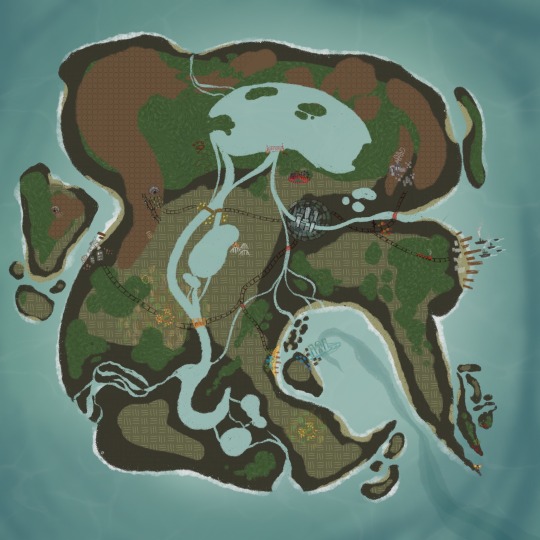
Or at least the first wip of the ebott map! I have all the main (above ground) locations so far!
For those who are wondering, dark brown is rocky hilly land/cliff sides, rusty brown is mountain ranges, khaki is grassland, green is forest, and light tan is beaches obviously lol. I don’t think I need to say what the blue areas represent.
I’ll add descriptions of each landmark below the next picture.
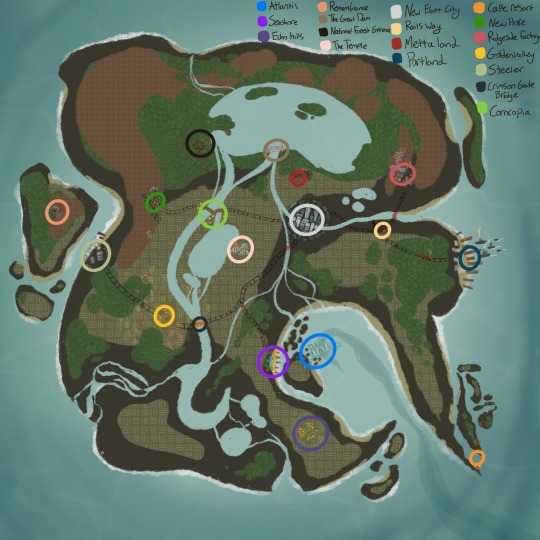
Alright starting from left to right:
Atlantis: home of the hadal monsters, the majority of this city is underwater, but some of it is accessible through the cliffs of bluefin island as well as floating buildings anchored to the shallower ocean around the island. The majority of Atlantis city houses its people in the curved section of the ocean trench by bluefin island. The buildings are carved into the rock.
Seashore: ebotts second largest beach town, seashore is a beautiful place where the majority of ebotts fishing trade takes place. It’s a popular vacation spot more for ebotts residents, but it does get some tourism too during holiday season.
Echo hills: the southernmost city of ebott, echo hills is a small city surrounded by grassy farmland. Due to the location, the place is raining more than not, and is perfect for crops that need lots of water! Echo hills is best known for its rice, producing just enough to sustain ebott.
Remembrance: located to the west on wells island, remembrance town houses one of the maintained entrances to the connected underground’s. It is also the point where the famine monsters were found and rescued. Here the royals placed the memorial of those left behind. Massive stone statues carved all over with the names of family who died underground or were left behind in the crash surround the caves entrance. A small town of monsters maintain the area, and some livestock are raised there as well.
The great dam: exactly what the name suggests, it’s just ebotts biggest dam. It’s part of the national forest so only a handful of maintenance workers and rangers actually live there. The dam is connected to waterfall lake.
The national forest entrance: this is the official way to see the national park, and access the maintained trails. Most of the park rangers live near here as well. There’s a small tourist trap too selling gift items, and farther up is a hunting lodge that opens during open season.
The Temple: located right in the middle of ebott, the actual temple building sits on top of three large mountains near kidney lake. The temple houses ebotts history and is a popular tourist spot. It also houses one of the maintained entrances to the underground, connected to some of the upper levels of waterfall.
NEW EBOTT: the largest city of ebott, and the capital of the county. New ebott has it all! The education, entertainment, shopping and jobs! And of course all the important big government buildings are here as well as most of the royals! New ebott is the only city connected to all the railroads and has the largest airport.
Rails Way: a city surrounding an important train stop, rails way is the in between rest stop between Portland and new ebott. Besides the trains passing through, it also is where trucks in ebott are made and fixed for the most part. There’s a few other factories in the city as well, like a few metal processing plants.
Metta Land: north to new ebott, this is basically a theme park, mega mall, and Hollywood all rolled into one spot. Metta land is so big that there’s even a few villages around it where its employees live. It also houses the only man/monster made entrance to the underground, going straight to hotland of course. What happens in metta land stays in metta land
Portland: this is the second biggest city of ebott located on the east. Almost all trade ships stop here. Portland is a bustling business city full of factories, and has a few houses of education too! It also houses most of ebotts navy and has the second largest airport.
Cape resort: located on the southern rocky cliffs, cape resort is in fact not a resort. It’s rocky, cold and generally horrible to live in if you’re not an aquatic monster lol. However it has an oil rig. Lots of hadal and sea monsters live there maintaining that oil rig.
New hope: new hope is a beautiful mountain town housing the entrance to snowdin, the largest entrance to the underground. It gets the largest amount of tourists year round and is a popular ski location during the winters as well. The parts of new hope that aren’t for tourists are mostly farmland or forests put aside for logging. Plenty of vineyards are in this area
Ridgeside factory: Ridgeside factory is ebotts main power plant and is directly connected to the core in hotland as well. It’s surrounded by a few villages too where more outdoorsy monsters live. Those who don’t work at the factory are either from hotland or are miners. The mountains in the area are littered with natural caverns being used as mine entrances
Golden valley city: the golden valley refers to the surrounding farmland, but in the very middle of it is the golden valley city. It is a rural type of place, is where the majority of ebotts produce passes through before being sold, and is a huge art center of the country. Just about everything above ground is grown in the valley surrounding the city.
Steeler city, the third largest city of ebott, steeler is where golden valley ships their produce to be preserved and spread around the rest of the country. Steeler is full of factories and restaurants. The most famous eating places of ebott are located here!
Crimson gate bridge: it’s a massive bridge named after the Golden Gate Bridge in California. This bridge is actually a sunny gold color, but they named it crimson in fear of being called copycats
Corncopia: a third farming community located between the split between white water river, ebotts biggest river. Corncopia is absolutely gorgeous but space is limited so it’s a fight to get any land there. The prime spots are taken by the rich for their homes or by the big wig farmers who cemented their place when the country was first forming
Not listed on the map is the underground! Ebott still has all the underground chambers from when the monsters were sealed away. New entrances to the underground are being discovered each day, and still plenty of monsters live there, preferring the comfort of a home they knew from before. Since there no longer trapped inside, the underground has become pretty comfortable. At least the discovered parts are ;)
I’ll describe the three main areas from smallest to largest
Hotland: hotland is really only a small thin chunk of the underground. A long but thin lake of lava surrounded by rocky chambers makes up the areas of hotland. The most popular spot of course is hotland city, connected to metta land, it’s pretty much the Vegas of ebott these days. The less visited spot, core, is a small town housing the core, connected to Ridgeside factory, and housing several research centers.
Snowdin. Snowdin is actual just the name of the small quaint town close to the underground entrance in new hope. They have year round skiing, and a pretty boat ride through waterfall straight to hotland for tourists. The outskirts of snowdin however have several villages filled with farmers growing magical crops that thrive in the cold temperatures.
Waterfall: it’s estimated that nearly 80% of the underground chambers are waterfall lands. Humid, cool but not frigid, and filled with varying levels of fresh and salt water, waterfall is underneath the majority of ebott, and even extends into the ocean some. Almost all of ebotts magical crops are grown down in the lived in parts of waterfall. It’s because of this area that ebott is self sufficient in feeding its people. Waterfall also houses the fourth and fifth largest cities of ebott; New Shell and Lily pad Fields.
Whew! That was a lot! I’ll probably add more to the map later on, but I think this is good for now
23 notes
·
View notes
Note
It’s been a while since you’ve talked about it, but I’m worried about visiting LA this year. I don’t live in a city that big, I can’t really investigate it online, and I have no idea where it’s safe to hotel there. Where do you (did you? You may have moved on?) feel safe in the city? Where would you recommend to people visiting to stay? You don’t have to answer if you don’t want to! You’re just one of the very few people I know that has lived there. Thank you, regardless of your answer, you didn’t have to read this at all❤️
hi! answering publicly in case anyone has advice they want to add :)
i'm a little worried this might come off as dismissive, but honestly i just don't find cities to be that dangerous. i've lived in LA for almost eight years, lived in another city for 3 years before that, and have visited about a dozen major cities outside of america
homeless people, by and large, aren't going to bother you. if you have a couple bucks to spare, give it with a smile and look them in the eye, and move on, or if you have nothing it's fine to say that you just don't have cash. if there's an encampment, which happens all over the city and just not on skid row, then they're definitely not going to bother you because they don't want to cause trouble and get kicked out of where they've managed to find a consistent place to sleep
the truth is if you get assaulted, statistically it's going to be by someone you know rather than a rando on the street. if you do get assaulted in LA by a stranger, it is WAY more likely to by an out of work background actor named josh who picks up shifts at a tiki bar than a homeless person or gang member
that being said, i actually have no idea what neighborhoods are considered dangerous in LA these days? i guess the flip side of finding nowhere in LA particularly dangerous is that it's all dangerous, but really you're more likely to get taken out jaywalking in dtla than anything else
as for locations, it's important to remember: los angeles is huge
it's more like a bunch of small towns next to one another than one cohesive city. the town i grew up in is smaller than the neighborhood i currently live in. if you're visiting, i HIGHLY suggest you rent a car. the public transport in LA is shit
i've only been to east LA to visit friends and eats burgers. both were enjoyable, but you're relatively far from the coast. they also built a stadium in inglewood, which multiple friends have informed me has fucked up the housing in the area, but i don't know if that would make it better or worse to stay in
anywhere in the valley is going to be cheaper than the city proper. north hollywood and studio city are good for that. the garland in noho is really cute and right next to the highway. sherman oaks and van nuys are decent too and they're literally right next to each other. i personally think encino is one large strip mall and so is panorama city, but panorama city at least has the saving grace of good filipino food
if you get to northridge, you've gone too far north. malibu beaches are definitely worth a visit, but it's such an expensive area and so far from everything that i wouldn't stay there
hollywood proper, venice beach, and santa monica are probably the most quintessentially LA places, but I would only stay in santa monica out of them. not for safety reasons, but because the other two are filled with tourists. which, i know you'll technically be a tourist, but still
koreatown has great food, but terrible parking. it's also a cheapish place to stay. downtown LA is something I avoid because it just reminds me of the financial district of every city i've ever been to. the dtla library and the last bookstore are the only things worth going there for, personally, and it's also a very expensive place to stay.
little tokyo is very cute and manages to feel separate from city while being surrounded by it. i admittedly only go to chinatown for bakery runs, but it's all delicious and vey beautiful, especially if you've never been to a chinatown in a major city before
west hollywood is expensive, and i wouldn't stay there myself, but it has great brunch places and devastating parking rules. the most expensive parking ticked i ever got was in weho. burbank is the land of animation studios and also porto's. it's a really cute area. beverly hills exists and taking a walk on melrose is fun but i wouldn't linger. again, not safety, just terrible vibes.
i know this probably seems like a lot but i've actually only listed the more popular neighborhoods that i'm personally familiar with. los angeles is HUGE.
i hope this helps somewhat! and sorry to anyone who's neighborhood i've disparaged T_T
#asks#moirail-mate#please don't destroy me for my LA opinions#i'm sure someone out there loves encino#oh! okay i will say the only decent place to get a steak and cheese in LA is in encino#so it has that
196 notes
·
View notes
Text
I am a plains kid, irrepairably so. Having been born into an environment like mine has many effects on people: it can invoke poetry, instill a deep fear of heights, make them spit their lungs out from the slightest elevation of terrain.
I believe i recieved most of these gifts, though I don't believe the great flat fields are anything to write poetry about. There's fields of canola and wheat, sunflowers as far as the eye can see, and further east there's wild grasslands and mirages on the road in the summer heat, then further out, old wells that define so much of what the average Hungarian pictures when they think of Hortobágy.
I grew up next to water, not the clear blue water of Balaton or the salt spray of the sea, but a green river with jagged stones, sticky clay and husks of plants that pierce your foot if you dare bathe in it without shoes.
In the spring the mosquitoes and frogs and mayflies and weeping williows awake and fulfill their puprose as intended by their mother.
I have never seen a mayfly bloom, I cannot write poetry about that either.
In the summer, the buzz of tourists from far away fills my ears just as loudly as the buzz of the mosquitoes, who are so great in number that I begin to fear approaching our raspberry bushes in broad daylight. My mother still harvests it, in rubber boots and thick protective clothes.
There is nothing more to my town, i realise every year. When the tourists go, the lights of the festival and the faint smell of weed dies out, all that is left is ten thousand people struggling to get by, living in the remains of a town once known for better parties, better beaches, less mosquitoes.
About an hour north there's grapevines on the hills. I've tried to write poetry about those but I know nothing about wine, and nothing about the hills.
Yet further, between mountains not tall enough for fear yet tall enough to make me spit my lungs out as I walk, sits a city, one of men long dead and poetry long sung. I walk past a castle, and towers reaching towards the sky. Then I walk past a residential building pointing a molded, rotting finger towards the clouds.
I climb the staircase to the top of the tower and feel nothing, not the fear of heights and not the buzz of tourists on a wine tour.
Many hours south I see a mountain by a sea, the road on top so high above pristine blue waters that looking to the side makes my heart jump, just like when I saw the Balaton as a nine year old on my first summer trip with a mother who packed both our bags all alone.
Many hours south even from there, sits a continent forgein to me, just across the waves. I don't speak the tongues of the people in either of these places.
I feel a wave of safety, just a small wave of poetry. I will only ever return here as a stranger, as part of the buzz of tourists from far away.
I am not a poet, I do not write about the places I am a part of. I am an ill fitting brick in the wall of my homeland, i am a passerine migrating for the winter and feeling the vertigo of mountains and the stillness of the plains.
I will never see poetry in the plains, in the brick wall, in the mangled remains of a culture painted the sunset-colours of despair. I am a passerine building my lone nest, I am a plains kid, irrepairably so.
95 notes
·
View notes
Text
福島県
Japanese Prefectures: Tohoku - Fukushima
都道府県 (とどうふけん) - Prefectures of Japan
Learning the kanji and a little bit about each of Japan’s 47 prefectures!
Kanji・漢字
福 フク blessing, fortune
島 しま、トウ island
県 ケン prefecture
東北 とうほく north-east, Tohoku (northernmost six prefectures of Honshu)
Prefectural Capital (県庁所在地) : Fukushima (福島市)
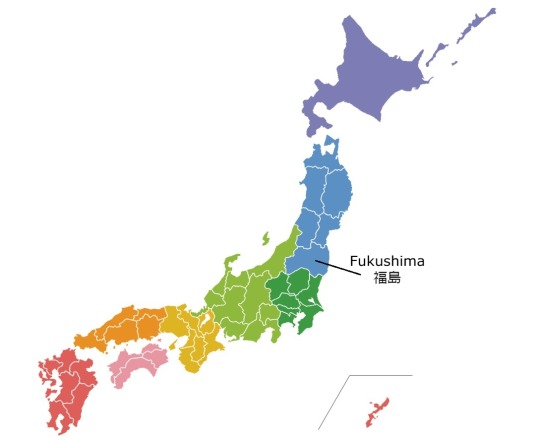
Fukushima is the third largest prefecture of the 47 prefectures of Japan and stretches between the mountainous interior of Northern Honshu to the Pacific Ocean. Like most of the other Tohoku prefectures, Fukushima boasts expansive natural beauty, relaxing hot springs, a rich history, and excellent ski resorts. The feudal Aizu Clan, of the still-standing castle town of Aizu-Wakamatsu, remained loyal to the shogun, even after the shogun was removed from power during the Meiji Restoration. This loyalty led to the Aizu area becoming a battleground of the Boshin War in 1868, where those loyal to the shogun were pushed northwards into Tohoku and Hokkaido as they resisted the reformers and those loyal to the emperor. The Aizu area boasts the post town of Ouchijuku, with buildings retained from the samurai era; Tsuruga Castle; hot springs; and a famous sake brewery.
The March 2011 earthquake and tsunami devastated the coastal areas of Fukushima Prefecture and caused a nuclear accident at the Fukushima Daiichi Nuclear Plant. Tens of thousands of residents were evacuated and a no-entry zone was set up around the nuclear plant. The no-entry zone makes up less than 3% of the prefecture's area, and even inside most of the no-entry zone, radiation levels have declined far below the levels that airplane passengers are exposed to at cruising altitude. Thus Fukushima has been deemed safe for tourists to visit. Wide areas of western Fukushima, in particular, escaped much contamination, including the mountainous interior around the historic city of Aizu-Wakamatsu. And even in most of the eastern parts of the prefecture, radiation levels have by now decreased to pre-2011 levels due to natural decay and decontamination efforts.
Recommended Tourist Spot・おすすめ観光スポット
Ouchijuku - 大内宿
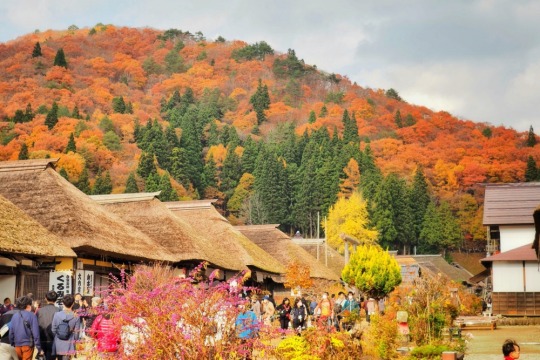
Photo by JR Times
If you want a taste of Edo Period Japan, Ouchijuku is the place for you. This is a former post town along the Aizu-Nishi Kaido trade route, which connected the centers of Aizu (a former castle town to the north in Fukushima) and Nikko (to the south in Tochigi prefecture) during the Edo Period. Restrictions set by the shogunate required travelers to make the journey on foot, and thus post towns such as Ouchijuku developed along the route to provide food, accommodation, and rest. Ouchijuku has been restored to look as it did in the Edo Period, with thatched roof buildings that house a variety of shops, restaurants, and minshuku (small traditional Japanese inns).
The former Honjin, or principal inn for high ranking government officials, is currently a museum, offering an example of elegant traditional housing interiors of the Edo Period and includes a collection of dishes, clothing, and other artifacts.
The Takakura Shrine is a five minute walk off the main path and hosts a unique purification fountain in the midst of a stand of Japanese cedar trees, and was dedicated to Prince Mochihito, who died in June 1180. Near the beginning of the Genpei War (1180-1185) during the Battle of Uji, the prince fled to the Phoenix Hall of the Byōdō-in temple, where he was later captured and killed at the torii gate of Kōmyōsan. It was said that he managed to escape, and hid in Ouchijuku.
Shohoji Temple is located at the end of the main street and up a steep flight of stairs. At the top of the path visitors can enjoy a panoramic view of Ouchijuku and its surroundings.
Regional Cuisine - 郷土料理
Kitakata Ramen - 喜多方ラーメン
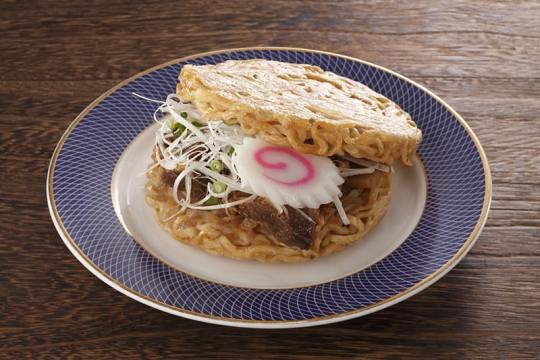
Photo by JR Times
Kitakata ramen is a gourmet specialty from Kitakata, Fukushima prefecture. The origin of these noodles is said to be from Chinese noodles sold in stalls by young people who had come from China from 1920-1930. The noodles are thick and flat with a firm appearance and texture and a relatively high moisture level. The soup is a soy base, with flavors varying depending on the shop, from miso to salt. To determine where to eat, there is a Ramen Map located at the tourist information center in Kitakata.
The popular Kitakata Ramen Burger is made from baked and hardened noodles together with pork, menma, and green onions. Kitakata is also known for its unique culture of eating ramen early in the morning. People who started work very early in the morning at sake breweries and on farms would eat ramen early in the morning, and thus the habit began. "Morning ramen" is available at many shops in the area.
Fukushima Dialect・Fukushima-ben・福島弁
Fukushima-ben or the dialect of Fukushima is similar in some ways to the other Tohoku (or North-East Japan) dialects, but also has some key differences. Here are some interesting phrases I found.
洗濯物をおっこむ (sentakumono o okkomu)
Standard Japanese: 洗濯物を取り込む (sentakumono o torikomu)
English: to take in the laundry
ぶっちめた (bucchimeta)
Standard Japanese: ぶつけた (butsuketa)
English: to hit (e.g. one's head)
すっぺったこっぺった (suppetta koppetta)
Standard Japanese: ごちゃごちゃ言うな (gocha gocha iu na)
English: don't complain about it
うっちしい (ucchishii)
Standard Japanese: うるさい (urusai)
English: noisy, annoying
#japanese prefectures#日本語#japanese#japanese language#japanese langblr#langblr#studyblr#都道府県#福島県#fukushima
85 notes
·
View notes
Text
Wanna write Junkers but dont know Aussie shit?
Writing a Junker for non-Aussies, some shit that will make it hit just right instead of half-assing it by writing arvo and calling it done:
the outback is a conceptual area, not a physical place, you cannot put "outback" into a gps and find it, but you can drive two hours out of your city and hit it. the outback can be a green lush rainforest or the outback can be red sand deserts. the point is, it's further away from where you are now and there is fewer people. A park is not the outback, but you can go "out back" to a park to infer its distance from your house.
the most aussie thing about junker queen, junk rat and roadhog is that shirts are a suggestion, not a requirement. if we dont have to wear full tops, we don't. no, that's not just blizzard going "lets show off half naked ppl", in many towns, especially on the coast, they have to enforce a "no shirt, no shoes? no service." rule, it gets that bad.
we also constantly get skin cancer, all the time. everyone. the australian sun has more uv in it than anywhere else in the world AND I DOUBT THAT GOT BETTER WITH ALL THE FREAKING RADIATION EVERYWHERE NOW. It doesn't matter your heritage, black, white, asian, you live in australia? you're getting skin cancer.
no this still does not mean we put on shirts. you'd think that change it, but no. wrong. fuck shirts. fuck pants too. scratch shoes probably while you're at it. ow my feet are burning on the hot pavement? TOO BAD SUCK IT UP. Shorts and a tank top if you really have to push it, but a bikini top at all times is perfectly acceptable for women.
but put on a fucking hat and sunscreen, you complete buffon, what are you, a tourist, not putting on a HAT? always put on a hat. DYOU WANT TO GET SKIN CANCER, HONESTLY,,,,,, but also we suck at putting on hats, just your parents yelled at you to do it and you tell others to do it and always have a hat on hand.
shirt exceptions: if you're in sydney or melbourne. they like, have actual standards about business dress. they even wear three piece suits and shit. my soul died just thinking about it. but even then,,,,, ehhhhh, if its summer, people get /hand wobbles, vague about shirt requirements. ive watched foreign business people see what sydney calls business dress and go EVERYONE HERE IS INFORMAL so like, its more dressed up than the rest of australia, but still probably more dressed down than half the world lmao.
they're call "sydneysiders" and everywhere else takes any reason to trash talk them at every opportunity. we all hate sydney. people who have never been to sydney hate sydney. sydney hates sydney: north sydney hates west sydney, west sydney hates east sydney and so on. everyone who lives in sydney wishes they didn't. fuck sydney. if you cant think of anything to say that's neutral, you can always just slander sydney and it'll be a fairly positive-neutral conversation. i can garuntee Junkers will be sitting there shoving radiated dirt into their horrendous bullet wounds, missing fingers, barely scraping alive, living in the literal apocalypse, and especially be like MAN AT LEAST IM NOT IN SYDNEY.
we call the brits 'Poms' and americans 'Seppos'. If you are talking to a Sydneysider, you can mutually hate on both of these groups. Poms more so. We hate the English. It's not active, btw, we aren't the yanks out here having national pride about a war or something, no, its a passive, low grade, mocking tone at all times about them. Ireland, Scotland and Wales are ok tho, we like them just fine. Just the Brits.
you are not allowed to openly state something is wrong, if its actually seriously fucked up, you have to understate it. for real my own mother was in a small flight plane that had to make an emergency landing in a farmer's field and the farmer came out and said 'bit of trouble mate?' as literal smoke was spewing out of the engine block and the pilot went 'reckon she'll be right in a bit', and everyone sat around having a beer.
except for the weather, you are always, at all times, allowed to complain about the weather. its too hot. its too cold. why is it so humid, why is it so dry. "hows this weather we're having?" is a normal conversation starter to make small talk and also just kill five minutes in line at [sports venue of the choice]. I can physically hear the two fucking junkers in the line to the Scrapyard Arena being like 'man fuck this weather lately' as if it's not the 432432 day of burning hot dry desert irradiated heat that was exactly the same as the day before, and everyone will be 'no yeah bloody hell aye'
slab of beer is a defined currency once you are outside of cities. this is a 24xbeer cans. you can pay for services in beer.
when passing people, "hey" is only acceptable in busy settings, the rest of the time, we're so fucking talkative. people in cities can say 'hi', but outside its got to be the 'eyyy' 'g'day', 'hey bruz', it's always "hi, how ya going?" then a nod and response of "not bad, you?" if you have the time to answer, otherwise a nod with 'g'day gotta go' and an indication you're in a rush is perfectly acceptable. if there is time for it, this is when you go into complaining about the weather. not engaging in this process is ruder than swearing at each other.
a mad cunt and a sick cunt, are your best friends, or the dude at the party who brought the rum and you all cheer. a shit cunt is the worst person who ruined it for everyone by calling the cops because you shouldnt stick a ice box drink cooler on a lawnmower and ride it while drinking said rum. asshole.
the ice box drink is called an Esky, by the way. Not cooler. Esky.
NORTH IS HOT, ITS WHERE ALL THE CROCODILES N CASSOWARIES N SHIT ARE.
the south is cold and does actually get snow, aka the Snowy Mountains are in the south. Yes, we did name it that.
Tasmania (that one big island at the bottom lmao) is snowy and rainy and makes really good whiskey and is probably actually just fine b/c no one cares about it and is not connected to the mainland at all, they judge all "mainlanders".
THEY'RE NOT CALLED COWBOYS, THEY'RE CALLED STOCKMEN, OR JACKAROOS AND JILLAROOS.
Kangaroos are like asshole deer. You will not break them if you hit them, your car however is *completely* fucked.
WE DO NOT CALL THEM 'FARMS'. They are 'properties' or 'stations'. A 'cattle station' is an acceptable term. A sheep station. If you say 'a property' everyone knows you mean an agricultural piece of land, and that it's specifically many, many, MANY, thousands of kilometers long. If you call them farm, we instantly clock you as american or a rich city person who has a 'hobby farm'.
The person who OWNS many, many, many, many, MANY, thousands of miles of land and don't actually work it themselves, may call themselves Farmers, but the rest of us often clock them as rich fuckers because of that reason.
We are not afraid of spiders, snakes, kangaroos, jellyfish, whatever it is foreigners scream about this week, the way you think we are. We don't like them, (ok some of us do), but they just are, and we all got education lessons young about how to not be an idiot about them.
we are fucking with you, at all times, i'm an aussie and I am fucking with you right now. i can meet another aussie in a bar that i do not know, have never seen in my entire life, and make shit up on the spot to distress someone about some animal that does not exist, and the other australian without a fucking beat will IMMEDIATELY. JOIN IN. Junkrat will be tricking Brigette about the existence of Land Sharks and even if she wants to strangle him to death, Junker Queen will 100% back him on whatever the fuck he's saying.
235 notes
·
View notes
Text
Hidden Gem in India | Travel Aashiq
0 notes
Note
Hello sorry for the inconvenience I just wanted a clarification on your winx au to understand how you place the realms
No inconvenience i'm sorry it took me so long to answer this!!!!!
I've posted the map I made a couple of times but i never really went that in depth about what i did to the places themselves. Well I mean I did but that's in a notebook somewhere and didn't ever actually get posted lmao sorryyyy
Okay so! I'm going to try formatting it as straight forward as I can, but it's still gonna be long as hell. Also there's some things I can't quite remember so I'll come back and update this when I find them in that notebook
Earth - Regular Earth where we live
Magix - The name of the planet where everyone that isn't from earth lives; It is very similar to earth in every way other than having magic; I might have people from this planet be called magicians, alongside people from earth being called earthlings.
COUNTRIES
Solaria - One of the major world super powers of Magix. A massive kingdom with happy citizens and generally good quality of life. Capital is Soletres which sits along the coastline of a massive bay, the capital city is surrounded by desert as you leave the coast. The south most shore is quite marshy and the northern most border is mountains, with lots of different kinds of terrain in between. Though King Radius and Former Queen Luna divorced many years ago, Luna is still a prominent figure in politics. Princess Stella is a beloved icon of her people.
Eraklyon - Another major super power. Shares some of its western border with Solaria and extends east to the coast. A very mountainous country, with some areas of plains to the south. Capital is ________. Quite a different vibe from Solaria, Eraklyon is heavily militarized with a sizable class divide. Much of the country lives in poverty. King Erendor and Queen Samara are proud, stubborn rulers (and parents). Prince Sky is largely a mystery to the public.
Andros - Though not quite as enormous as the last two, still quite a powerful kingdom as they are rich in resources. Also in control of Lightrock Penitentiary, a highly secure prison on an small island to the north. The main island of Andros was created by a massive, now extinct volcano. The bowl is now an enormous lake that is connected to the ocean via giant rivers and canals, this is where the capital city, _________, is located. Andros is a semi aquatic kingdom, a merge of two civilizations that were once at war, and as such there is a secondary royal family that resides off the coast of the main island. They are secondary in power to the main royal family, comprised of King Neptune, Queen Ligea, and Princess Aisha.
Dominoe - By the time of our story, this kingdom has long since fallen. All that remains of this once flourishing nation is abandoned ruins nestled in the snowy mountains north of Eraklyon. After the fall of Dominoe, Eraklyon actually tried to take over it's territory, but found the landscape to be far too harsh to settle. The captial city of Sparks is now a ghost town, or is it?
CITIES
Linphea - A very small city in the forests of Solaria. Populated by both civilians and acolytes as this city is the location of the Sacred Garden of the Mother Dragon. It is said to be where she first landed on Magix and is a holy site full of secrets.
Melody - A destination city in the south of Solaria. A cultural hub filled to the brim with tourists. This bustling city is always buzzing with passion, and it's where Musa's parents met and she was born.
Zenith - A densely packed city in the north west of Eraklyon, just within its border with Alfea and close to Red Fountain. This city is a hot spot for tech and engineering. Despite being a bustling city that never sleeps, this is ironically one of the more socially relaxed parts of Eraklyon, and people are a lot more welcoming here than other parts of the country.
Dyamond - This is a spoiler!
Gardenia - Bloom's hometown on earth, now located just outside of New York City because that's the area I'm familiar with and that'll make it a lot easier for me to write for.
OTHER
Alfea - Elite fairy College north of Linphea, near the Solarian border with Eraklyon but on the Solarian side.
Cloud Tower - College for witches just north of Solaria's border in a small country I don't have a name for yet, and to the west of Alfea. One of the few schools for witches across Magix, allegedly where the practice was founded.
Red Fountain - Military academy to the east of Alfea, past the border into Eraklyon.
Lightrock Penitentiary - a highly secure prison on an small island to the north of the main island of Andros
Light Hope Monastery - Home to peaceful monks who tend to the island on which Lightrock Penitentiary is located. Sometimes prisoners with excellent behavior can be granted a sort of parole and allowed to live amongst the monks. It is also kind of like rehab.
Omega Penitentiary - the most brutal prison in all of magix, where the worst magical offenders of all time are kept in crystalline prisons designed by the Great Dragon herself.
I think that's just about everything I've cooked up so far!!
25 notes
·
View notes
Text
SNOW ON THE BEACH
OBX WRITING WEEK DAY 2 — MEET CUTE W/ JOHN B.
word count: 1158
summary: after y/n's flight is delayed, she ends up stranded in a cafe in kildare, rescued by a golden-haired boy.
a/n: my first time writing for john b. and i had so much fun! it's been so hot where i am so i am yearning for winter and cozy vibes in case you can't tell haha

Y/N’s flight to Boston had been delayed at the Kildare Airport, out of all places. And out of all the reasons, it was because of an impending snow storm. Who even knew that it snowed in North Carolina? She couldn’t believe her luck, she was supposed to be going home to visit her family for winter break and now she was stuck in the middle of nowhere.
She supposed the Outer Banks would’ve been beautiful any other time of the year, but it was December and there was no one left but her and the locals. With an indefinite layover, she decided to leave the airport and head into town. Y/N was in desperate need of caffeine.
After hailing a taxi and asking to be taken to the nearest cafe, she lugged her carry-on and suitcase into the store before realizing that she had no place to stay. She knew no one in the area and she was sure all the hotel rooms for the night would have been booked by now.
Groaning, she ordered a hot caramel latte and slumped into a seat by the window. Y/N shot her mom a quick text about her flight being delayed, not in the mood to call her and explain the whole situation. Next, she pulled open her laptop and started looking into a cheap AirBnb or motel nearby.
In the middle of doing so, she was interrupted by a voice behind her.
“Hey, you’re not from around here,” he said.
She turned around to see who it was. Her initial guardedness went away when she saw that the boy was around her age. “Is that a question or a statement?” she replied.
Smiling, he said, “I’m pretty confident it’s a fact. I’ve never seen you around here before.”
“Don’t you get a lot of tourists?”
“Not many as pretty as you are.”
Y/N found herself blushing despite how ridiculous this situation was. “I’m just passing by,” she muttered out, unsure of how to respond to his straightforwardness.
“Really? You didn’t plan on vacationing in the Outer Banks in the dead of winter?”
She laughed, the ice having been broken, and decided that it was probably safe to introduce herself to this (admittedly) cute stranger.
“Haha, no, not really. I’m Y/N, by the way.”
“My friends call me John B. Y/N, what’s your story?”
“Well, my flight here was awful, thanks for asking. Then I found out my connection to Boston was delayed because of a New England storm or something and now I’m stuck here indefinitely,” she sighed.
“Shit, sorry to hear that. You must be really unlucky because it never snows around here.”
“You’re really helping me feel better John B.”
“Sorry,” he scratched his head. “How can I help?”
“Seriously? You want to help me?”
“Yeah, sure. Got nothing better to do.”
“Well, unless you have a place where I can crash I don’t think you can help me very much.”
With that, the boy’s eyes lit up. “Actually, I do happen to have a place for you to stay.”
“Oh, I-I was sorta joking you really don’t have to do that.”
“It’s no big deal, my friends crash there all the time. My dad’s not home that much and even if he was, he wouldn’t mind.”
Y/N was starting to wonder what the catch was, sure the boy looked nice and like he meant well, but at the end of the day, this was a stranger. He could be luring her back to his house and she would never be seen again.
“I know what you’re thinking,” he started again.
“What?”
“You can trust me. Look, it’s a small town, everyone knows me. I’ll even invite all my friends over so you can feel safe. Two of them are girls.”
Y/N really wanted to say yes. She had been silently begging all day for a miracle and this was the closest thing to it at the moment.
Sighing, she gave in. “Okay, fine. How far away do you live?”
“Like ten minutes that way,” he pointed east from the store. “We can get there in the Twinkie.”
“The what?”
He led her outside where he had parked his van, infamously named the Twinkie. John B. carried her suitcase into the back while she held onto her carry-on.
“And this thing is safe?”
“Yes, she is safe to ride in. My friends and I have been through a lot worse than a minor storm with her.”
“Whatever you say,” she said, still not convinced. “Hey, what time do you think it’s going to snow anyway?”
“Who knows if it even will? My buddy Pope said it probably won’t get cold enough.”
What was supposed to be a short ride back to his house ended up becoming a very elaborate tour of the town. It started with John B. pointing out a few of his friend’s houses, then the The Wreck where his friend Kiara worked, the high school they all went to, and finally, they ended up at the beach.
Y/N had to admit, it was a nice beach. Even in the dead of December, the sand looked clean and the sparkling ocean had not yet frozen over. As John B. admired the landscape, she used this time to get a good look at him. His golden brunette hair, the blue bandana around his neck, the slight hint of a smile on his face as he looked out into the water. She couldn’t decide what was more beautiful to her at that moment, the boy or the sea.
“Oh my god,” his voice snapped her out of her thoughts.
“What? What?”
Wordlessly, he fumbled open his side of the door and raced outside.
“John B? Where are you going?” she called out after him.
“I can’t believe it,” he said, in awe.
“Can’t believe what—” Y/N stopped in her tracks. There, in front of them, and above and behind, were small white flecks. They could’ve been lights, or fireflies, but she knew they weren’t. He knew it too, even though he had only seen it a few times in his life.
“It’s snowing,” he said, incredulously.
“Oh my god, it is!” Y/N had grown up with the seasons, had felt the wrath of a New England blizzard ten times over, but this, this was something magical.
“Is this what it feels like? It’s like a scene from a movie,” he was smiling like a little kid now, reaching to grab a pocketful before the flakes melted in his hand.
“This is so weird.”
“But beautiful,” he looked over at her then, taking in the moment. Her smile was like she just won a contest, and she found no need to hide it anymore.
John B. pulled his arms around Y/N, wrapping her in his embrace. They stayed like that watching the snow come down, silently.
#obxweek23#obx#outer banks#obx x reader#obx imagine#john b x reader#john b imagine#chase stokes#chase stokes x reader#john b x you#john b routledge
53 notes
·
View notes